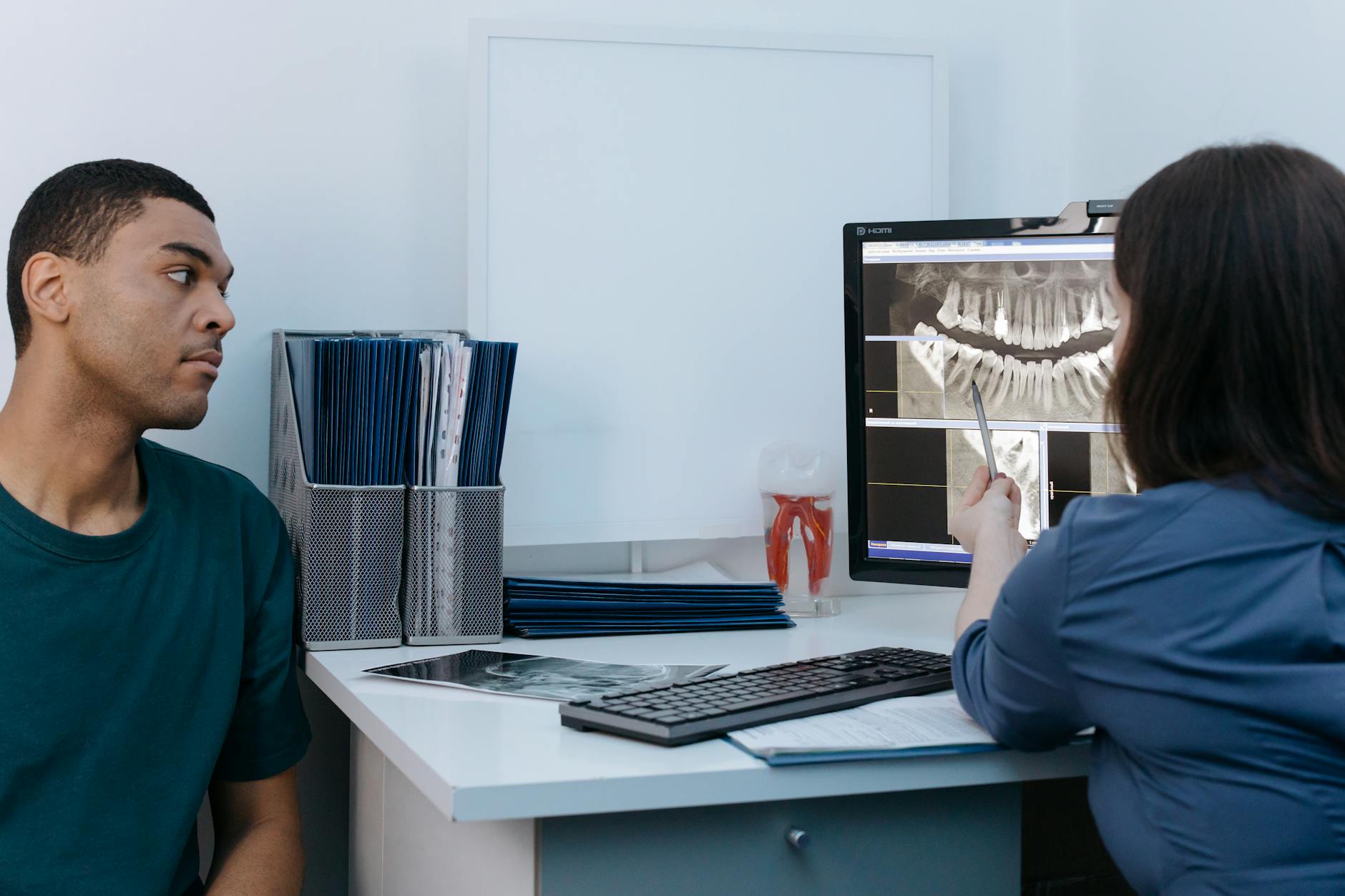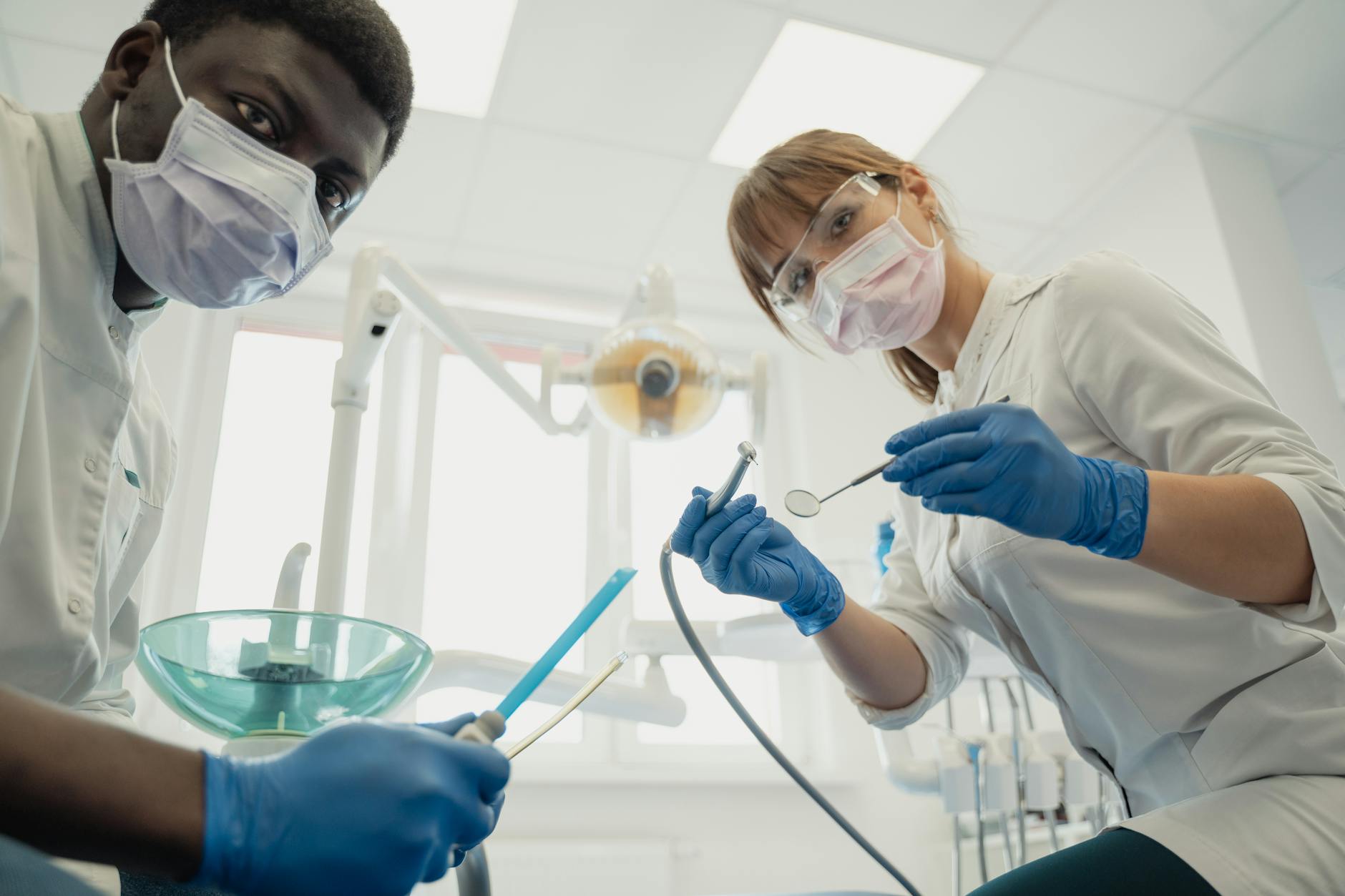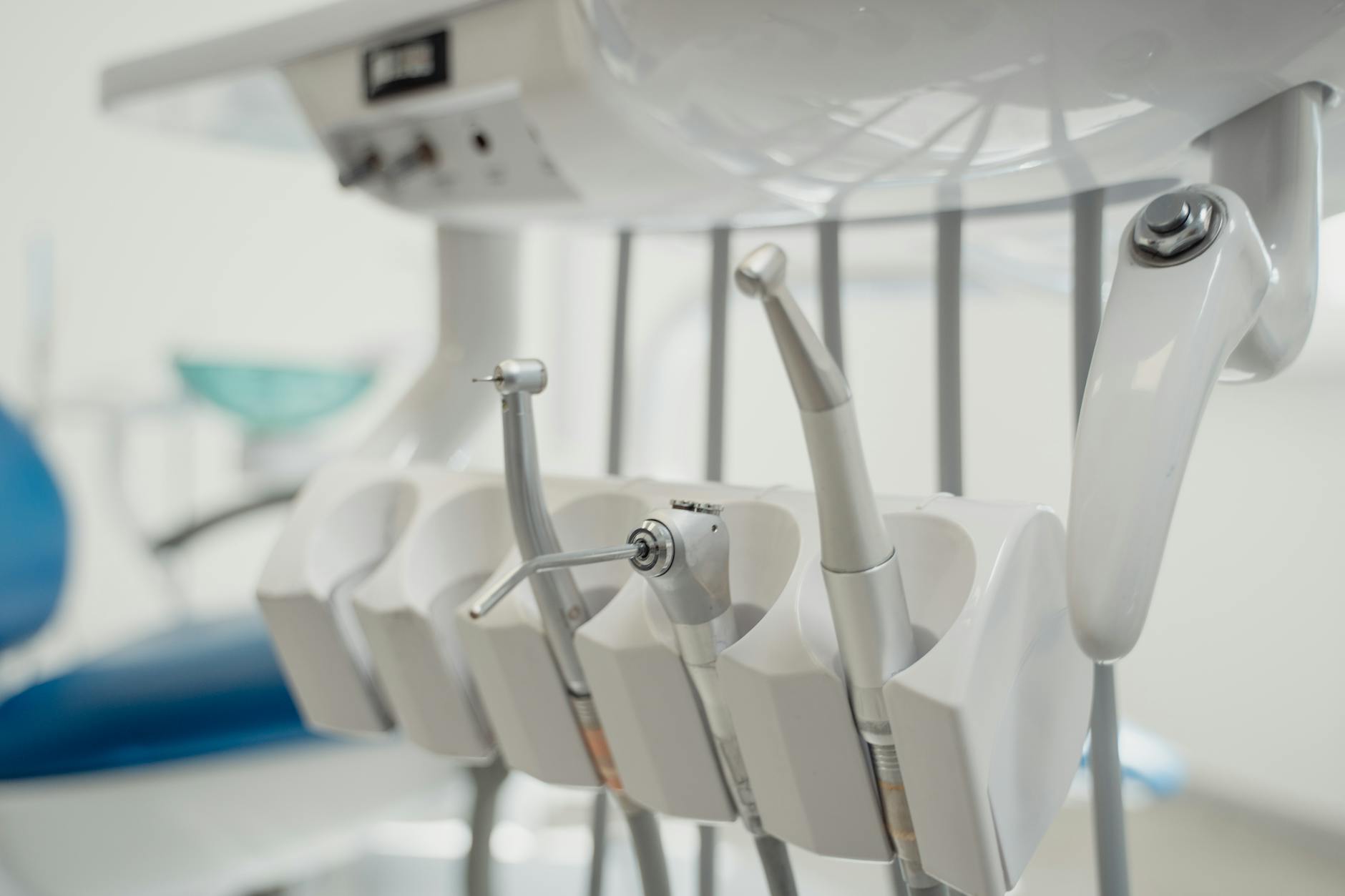Introduction to 3D-Printed Provisionals
3D-printed provisionals are temporary restorations made from a digital design to preview your future smile. You wear a printed mock-up for a few days to test your smile. They let you and your dentist judge shape, color, and bite before any final work is made. This approach is often called 3d printing provisionals esthetics.
Here is how it works. We scan your teeth, design on a computer, print in resin, post-cure, polish, and bond the provisional temporarily. Because the design is digital, changes are fast and repeatable. The trial can also guide choices for treatments like custom porcelain veneers.
- Tooth length and smile line
- Tooth proportions and midline
- Speech sounds, like S and F
- Gum display and contours
- Bite contacts and function
- Daily comfort and cleaning
Material and technique matter. Print orientation can change fracture resistance and marginal quality in vitro [1]. A systematic review reports that mechanical properties of printed provisional resins vary by material and post-curing, and many fall within clinically used ranges [2]. Comparative in vitro data shows some printed materials achieve marginal fit similar to milled provisionals [3]. In the clinic, this means careful finishing and short-term wear checks help confirm fit.
For patients considering esthetic or restorative changes, 3D-printed provisionals offer a trial period before committing to definitive work. Findings from the trial inform final choices for durable crowns and bridges or other restorations. Photos, feedback, and bite checks guide the next steps. Your preview should feel natural, look balanced, and function comfortably. Try the look, then decide with confidence.
The Role of Esthetic Trials
Esthetic trials let you “test drive” a proposed smile before any permanent changes are made. They help confirm that the look, feel, and function match your goals, and they surface issues early so they can be corrected while it is easy to do so. Often called 3d printing provisionals esthetics, these trials turn ideas into something you can see and wear in daily life.
You try a new smile for a weekend, then share what felt right. During the trial, we evaluate how teeth support lips, how you speak, and how your bite settles through normal eating. Photos and brief notes capture what you like and what needs refinement. That feedback guides precise digital adjustments, so the next version moves closer to your target result.
Trials also improve planning. If the preview shows that tooth position limits the final shape, we may stage care, such as planning clear aligner treatment to create space before definitive veneers or crowns. If small shape changes achieve the look, we can show that with selective reshaping or a mock-up, then confirm whether conservative dental bonding can meet the goal. This stepwise approach reduces surprises and supports informed consent.
Clinically, the trial helps protect healthy tooth structure. You can experience new tooth lengths and contours without committing to irreversible work. Your dentist can check bite contacts under real chewing and speech, not just on a model. Small refinements to edge position or surface texture in the provisional often translate into fewer adjustments at delivery of the final restoration.
For patients, the value is clarity and confidence. You make decisions with real-world feedback instead of guesswork, and the team documents what works before moving forward. If you want to see our current hours, plan a quick visit to review your trial in person. A thoughtful trial makes the final smile more predictable.
Advantages of Digital Dentistry
Digital dentistry uses scans, software, and 3D printing to plan and deliver care with precision. For esthetic trials, it means faster turnarounds, fewer messy impressions, and provisionals that can be reproduced exactly. The result is a smoother experience and more predictable outcomes.
In a typical week, you might scan on Monday and try your mock-up by Wednesday. Intraoral scans capture fine details without trays, so most patients find them more comfortable. The digital design links tooth shape to your face photos, helping align the smile with lip support and speech. Because every step is saved, we can rollback or revise specific features without starting over.
Speed is only part of the benefit. Digital design tools measure thickness, contact points, and occlusion, so the printed provisional starts close to ideal. That reduces chairside adjustments and helps protect tooth structure by keeping changes additive where possible. If you plan to brighten your shade first, we can time a short course of professional teeth whitening so the provisional matches the new color target.
Consistency matters for decision-making. With version control, we can compare two smiles side by side and change only one variable, such as incisor length. Photos, notes, and scan overlays make feedback objective, not just “I like it better.” If a small bite tweak is needed, the same file can be adjusted and reprinted, keeping the fit and margins you already liked. This improves communication among the patient, dentist, and lab.
Digital records also travel well. If you pause treatment or move, your scans and designs can be reopened later, and a new provisional can be printed from the same data. That is why many teams refer to this workflow as 3d printing provisionals esthetics, because it blends planning and trial in one system. Clear data, less guesswork, better choices.
How 3D Printing Enhances Esthetics
3D printing improves esthetics by turning a precise digital design into a wearable mock-up you can see in real life. It captures tooth shape, symmetry, and the smile arc with high accuracy, so small visual changes are easy to judge. Because the design is editable, we can refine contours and proportions until the smile looks balanced on your face. The process lets you preview details before committing to final materials.
Picture this: you wear the printed smile to a family dinner under normal lighting. Face-referenced design aligns the dental midline to your facial midline, and matches incisor length to your lip curve for a natural smile arc. Buccal corridor fullness can be widened or softened to frame your smile without over-bulking. Since each variable can be changed alone, you can compare options and choose what looks most natural.
Surface detail guides how light reflects. We can adjust line angles to make teeth appear slimmer or broader, and add gentle texture to break up glare for a lifelike sheen. Polishing levels can be tuned from matte to glossy, helping you decide how bright you want the smile to appear. Embrasure shapes and edge contours are refined to signal a youthful or more mature look, based on your preference.
Color planning also improves. While printed resins do not replicate the depth of porcelain, they help set a target shade and value so the final result does not look too bright or too dull. Controlling thickness in the provisional can preview how edge translucency and brightness might read in photos and daylight. The mock-up’s emergence profile and cervical contours let us check gum display and harmony when you smile, then fine-tune before final ceramics.
For patients, this means clearer choices and fewer surprises. The esthetic plan is tested on your face, under your lighting, and during your routine. Your feedback shapes the final texture, contours, and shade strategy, which makes 3d printing provisionals esthetics a practical path to a natural-looking smile. Small trials lead to confident decisions.
Materials Used in 3D Printing
For esthetic trials, dental 3D printers use light-cured, tooth-colored resins made for temporary crowns and mock-ups. These materials print with fine detail, then are polished to a smooth, enamel-like surface. Shade and translucency options help the preview look natural, and some systems include gum-tinted resin for checking contours near the gums.
Think of the resin as a liquid that hardens under specific light, then gets stronger with heat and light during post-curing. Washing and proper post-cure complete the set, which improves hardness and surface stability. In practice, choosing a resin that matches the planned thickness helps edges stay crisp without feeling bulky. A weekend of normal wear, like sipping coffee, can reveal whether the polish resists everyday staining.
Surface finish matters for both looks and hygiene. A high polish, or a light glaze, can reduce plaque buildup and make the provisional easier to clean. Translucent options let us preview brightness at the biting edges, while more opaque shades help test overall value. Beyond appearance, wear behavior is important. Laboratory chewing simulators have reported wear performance of additive-manufactured dental polymers, supporting their use for short-term clinical trials [4].
Material choice also shapes comfort. Some resins feel smoother on the tongue after fine polishing, and others excel at margin sharpness for precise mock-ups. Your dentist pairs the resin with a temporary adhesive that holds well yet allows easy removal, so changes are simple. These materials enable 3d printing provisionals esthetics that you can judge in your daily routine.
The goal is a preview that looks natural, cleans easily, and holds up through the short test period. With the right material, your trial provides clear feedback and fewer surprises when moving to final restorations. The right material makes the trial smoother.
Technique for Creating Provisional Crowns
Provisional crowns are made by shaping a custom temporary that fits your tooth and matches the planned smile. We use a digital design to create a precise shell, finish it for comfort, and cement it with a temporary adhesive. You wear it briefly while we confirm look, bite, and speech before final work.
The process starts with photos and an intraoral scan tied to your face for orientation. If a tooth needs shaping, reduction is kept minimal and guided by the planned contour. Margins are defined cleanly with retraction so the temporary seals well and cleans easily. The printed crown is post-cured for strength, then the edges and embrasures are smoothed to protect gums. Example: we reduce a chipped incisor slightly, then seat a printed crown for a weekend trial.
Next, we prepare the inner surface with light air abrasion or pumice, choose a non-eugenol temporary cement, and seat the crown under steady pressure. We remove excess cement, floss contacts, and check the bite with thin papers in light closing and gentle chewing. Because color stability and surface roughness can differ among conventional, milled, and 3D‑printed interim crowns, careful finishing and polishing are part of the technique [5]. Retention depends on more than cement; manufacturing method and the tooth’s preparation taper can influence how well a temporary crown stays in place in vitro [6]. These checks help the provisional feel secure yet remain easy to remove for adjustments.
Fine-tuning is quick. We adjust contact points so brushing and flossing are smooth, then refine texture and gloss so the tooth looks natural in photos and daylight. Small changes in edge length, line angles, or surface luster are recorded and, if needed, reprinted for a better fit. This practical, stepwise approach is the backbone of 3d printing provisionals esthetics. A well-made provisional makes the final result more predictable.
Protecting Dental Tissue with Provisionals
Provisionals act like a shield for teeth while we refine the plan. They cover freshly prepared dentin, reduce sensitivity, and block food, air, and temperature changes from reaching the pulp. They also keep teeth from drifting and protect edges from chipping during the trial period.
Imagine you chip a front tooth on a mug. A well-fitted provisional seals the exposed surfaces, so the tooth stays comfortable and clean while decisions are made. Beyond comfort, it protects biology. By sealing margins with a temporary cement, we reduce plaque stagnation around the preparation and make daily hygiene easier. In 3d printing provisionals esthetics, the design can be additive, so we build up shape instead of removing extra enamel. This preserves healthy structure while you test appearance and function in real life.
Provisionals also protect the bite and gums. They hold contact points so neighbors do not tip into the space, and they keep opposing teeth from over-erupting. Contoured emergence profiles support the soft tissue, helping shape the gum outline before final restorations. If a tooth has deep decay or a crack, a sealed provisional can serve as a short diagnostic phase. Persistent pain or lingering sensitivity during this period may signal the need for an endodontic evaluation and root canal treatment before definitive work. This stepwise approach avoids rushing irreversible changes.
Good technique makes the protection work. Clean margins, smooth surfaces, and light, even contacts reduce irritation and make brushing and flossing simple. Short follow-up checks confirm the seal, the bite, and gum comfort, and any adjustments are easy to reprint from the same file. When it is time to transition, the provisional serves as a precise blueprint for the final restoration, keeping tooth structure safe from start to finish.
Protect first, then perfect the final smile. That is the goal of thoughtful provisional care.
Case Studies in 3D Printed Provisionals
Case studies show how 3D printed provisionals help patients test looks and function before final treatment. They highlight real choices, such as tooth length, speech, and bite, made safer by short trial wear. Example: you wear a printed mock-up through a workday and a family dinner.
One common case is closing spaces while keeping a natural smile line. A patient with small gaps tries a printed mock-up that narrows spaces and slightly lengthens the front teeth. Over a weekend, we check speech sounds, lip support, and how the bite settles during normal eating. If “S” sounds whistle, we shorten the edges a fraction and reprint. The trial reveals precise changes before any permanent work is planned.
Another case involves a missing or fractured tooth. A printed provisional can quickly restore the smile while the team plans the final solution. When gaps are present, this approach can preview shape and gum contours, then transition to modern partial denture options if that best fits the long-term plan. A published case report describes a 3D printed provisional removable partial denture designed on a virtual patient after trauma, showing practical esthetic and functional recovery during planning [7].
Full-smile changes also benefit from trials. For patients considering multi-tooth reconstruction, a printed full-arch mock-up helps verify phonetics, chewing comfort, and facial support before committing to definitive materials. This data can guide whether conservative reshaping, ceramics, or an implant path is best. If implants are appropriate, the trial can inform tooth position and bite targets before discussing full-arch implant options. This stepwise workflow is part of 3d printing provisionals esthetics, where each iteration reduces guesswork.
For patients, these cases make choices clearer and safer. You see the smile on your face, in your light, and during daily life before deciding. Thoughtful trials turn complex plans into clear next steps.
Future Trends in Digital Dentistry
Future trends in digital dentistry point to faster, smarter, and more connected care. For esthetic trials, expect more lifelike mock-ups produced quickly, with designs that transfer accurately to final restorations. These advances aim to cut chair time, improve precision, and make results more predictable.
Imagine scanning in the morning and trying a same day printed mock-up at lunch. Materials are improving, with stronger resins for longer wear and better surface polish. Research and development in additive manufacturing of ceramics, including zirconia, suggest a path toward printing definitive-strength parts in the coming years, which could narrow the gap between trials and finals [8]. As printers and post-curing systems mature, we will see thinner, crisper margins and shade control that better previews translucency.
Software will do more of the heavy lifting. AI-assisted design can suggest tooth proportions, estimate occlusal contacts, and check phonetics from recorded speech. Face-referenced workflows will align the dental midline to facial features automatically, then simulate smile changes under different lighting. For 3d printing provisionals esthetics, this means fewer iterations, clearer comparisons, and mock-ups that mirror final contours with minimal adjustment.
Implant planning is also becoming more integrated. Digital setups, stackable guides, and real-time navigation help place implants to match the approved trial smile and bite targets. Reviews highlight this direction, connecting virtual planning, guided surgery, and prosthetic outcomes in a single workflow [9]. Remote checks will expand too, using calibrated photos or short videos to verify comfort, bite marks, and hygiene between visits, then prompting small file edits before the next print.
For patients, these trends mean clearer choices and fewer surprises. You will see precise previews sooner, and the same data will guide your final crowns or implant restorations. If you are considering implant-retained dentures, digital planning with trial mock-ups can preview fit and lip support before treatment, then inform implant-retained denture options. The future focuses on accuracy, transparency, and comfort at every step.
Patient Experience with Printed Provisionals
Most patients find printed provisionals smooth, light, and easy to wear. You may notice slightly fuller tooth edges at first, but speech and bite usually settle within a day. Normal brushing and gentle chewing feel familiar, and the temporary cement allows easy removal for adjustments. People often say the preview makes choices simple because they can see and feel the changes.
Picture this: you wear the mock-up to a morning meeting and a quick lunch. Early on, “S” or “F” sounds might feel different, then improve as the tongue adapts. We suggest avoiding very hard or sticky foods for the short trial, since those can pull on the temporary. If anything rubs or feels high when chewing, a quick polish or bite tweak solves it. These small notes guide the next design so each step fits better.
Comfort and hygiene are straightforward. Brush gently, floss with care, and use a floss threader if contacts feel snug. A polished surface resists plaque and stains better, though coffee or red wine can tint the glaze during wear. Clinical reports show that 3D printed temporary restorations can provide esthetic and functional coverage during planning, supporting short-term everyday use [10]. If dental visits make you anxious, longer scan or try-in appointments can be made easier with gentle oral sedation options when appropriate.
What happens if something loosens? The temporary cement is designed to release cleanly, so call your dentist if a piece lifts or feels mobile. Minor sensitivity can occur if a tooth was recently shaped, and it often improves once the bite and margins are refined. Your feedback, photos, and a brief check help lock in the right tooth length, texture, and bite before moving on. This real-life preview is the heart of 3d printing provisionals esthetics, turning guesswork into clear decisions.
Clear comfort, clear feedback, better final results.
Maintenance and Care for Provisionals
Care for provisionals is simple: keep them clean, avoid extra forces, and report any loosening. Brush gently twice daily, floss with care, and rinse after coffee, tea, or red wine to limit staining. Skip very hard or sticky foods that can pull on the temporary. If something feels high or rough, contact your dentist for a quick polish or adjustment.
Think of the provisional like a polished shell that protects the tooth and gums. A soft toothbrush and nonabrasive fluoride toothpaste help keep the surface smooth, which supports healthy gums. When flossing, slide the floss out to the side instead of snapping up, so you do not lift the temporary. If contacts feel snug, a floss threader or water flosser along the gumline can keep margins clean without tugging.
Food choices matter during the short trial. Cut crisp foods into small pieces and chew slowly, especially on day one while you learn the new bite. Avoid taffy, caramels, and ice chewing, since these can dislodge or chip edges. Limit highly pigmented drinks, or sip water afterward to reduce tinting. Choose gentle mouthrinses, and avoid abrasive pastes or whitening strips that can roughen the surface and make stain stick more easily.
Comfort tips are straightforward. If you clench or grind at night, ask about a light guard to reduce stress on the temporary. Minor cold sensitivity can improve as the bite is refined and margins are sealed; a desensitizing toothpaste can help in the meantime. If the provisional comes off, keep it safe, do not glue it, and contact your dentist to clean and recement it. These same habits support results whether you are testing one tooth or using a full smile preview with 3d printing provisionals esthetics.
Good daily care keeps gums calm, the bite stable, and feedback accurate for your final plan. Small, steady habits make the trial predictable.
Considerations for Clinical Application
Clinical success with 3D-printed provisionals depends on case selection, careful design, and disciplined finishing. Teeth and gums should be healthy, the bite stable, and the plan clearly defined. Provisionals must be thick enough where they contact and chew, fully cured, and polished so they wear comfortably during the short trial.
Picture this: you try a new smile for a weekend under normal routines. Before printing, address active decay, inflamed gums, or loose contacts, since these can skew fit and esthetics. Plan additively when possible to protect enamel, and avoid over-lengthening in deep overbites or heavy bruxism. Incisal edges and connectors need minimum thickness, while embrasures stay open enough for floss. These choices reduce fracture and make hygiene simple.
Accuracy starts with clean scans and face-referenced photos. After printing, complete washing and post-curing to harden the resin, then remove any surface inhibition layer before polishing. Try-in follows a sequence: seat with light pressure, check margins and contacts, then refine occlusion in light closing and gentle chewing. Phonetics, especially “S” and “F,” guide edge length, and lip support guides facial harmony. Use a non-eugenol temporary cement so later adhesive steps are not compromised. Record every change with photos and notes so the lab can transfer the approved details to the final work.
Set clear wear limits and instructions. Suggest avoiding very hard or sticky foods, rinsing after dark drinks, and calling if anything feels high or mobile. Schedule a short check within a few days to review comfort, bite marks, and minor stain. For parafunction, consider a light night guard during the trial. If shade is being refined, standardize lighting for photos and map value and translucency so the definitive material matches what you approved.
Thoughtful protocols make 3d printing provisionals esthetics predictable in daily life. When biology is calm, the design is additive, and finishing is meticulous, the trial provides reliable feedback that transfers cleanly to the final restorations. Small, planned steps lead to stable outcomes.
Frequently Asked Questions
Here are quick answers to common questions people have about 3D-Printed Provisionals for Esthetic Trials in Glendale, AZ.
- What are the benefits of using 3D-printed provisionals?
3D-printed provisionals offer several benefits. They allow you to test the look, feel, and function of a proposed dental restoration before committing to a permanent change. This process helps you and your dentist make informed decisions by evaluating the esthetic and functional aspects in real-life conditions. Additionally, the digital design allows for quick and accurate adjustments, resulting in a more customized and precise outcome. These provisionals reduce guesswork and support a clearer path to your final smile.
- How durable are 3D-printed dental provisionals?
3D-printed dental provisionals are designed to be durable enough for short-term trials. They are made from specialized resins that provide adequate strength and wear resistance for temporary use. Although some concerns exist about the durability of materials, research shows that these provisionals perform well within their expected time frame, offering reliable function and esthetics during the trial period [ref:41054184].
- How do 3D-printed provisionals handle in terms of wear resistance?
3D-printed provisionals typically exhibit good wear resistance due to the materials used in their construction. While not as robust as permanent restorations, they hold up well during normal eating and speaking activities over the short trial phase. This makes them a practical choice for testing dental restorations before making permanent choices, allowing patients to experience and adjust to changes in real-world conditions without compromising final outcomes.
- What role does digital dentistry play in 3D printing provisionals?
Digital dentistry significantly enhances the creation and use of 3D-printed provisionals. By leveraging CAD/CAM technology, dentists can design precise mock-ups based on digital scans, ensuring high accuracy in the fit and alignment of these provisionals. This technology allows for easy adjustments and quick turnaround times, offering a seamless experience for both the dentist and the patient, and promotes efficient planning for permanent restorations.
- What do patients say about wearing 3D-printed provisionals?
Patients generally report positive experiences with 3D-printed provisionals. They often find these temporaries comfortable and easy to adjust to after a brief period. The ability to preview and test their future smile reduces uncertainties and increases satisfaction, as patients can participate in the design process. Positive feedback often highlights the natural feel and appearance of these provisionals, contributing to a more confident decision-making process.
References
- [1] Effect of build orientation on the fracture resistance and marginal quality of 3D-printed anatomic provisional crowns: An in-vitro study. (2024) — PubMed:38690397 / DOI: 10.1016/j.sdentj.2024.01.004
- [2] Mechanical Properties of Three-Dimensional Printed Provisional Resin Materials for Crown and Fixed Dental Prosthesis: A Systematic Review. (2023) — PubMed:37370594 / DOI: 10.3390/bioengineering10060663
- [3] Marginal fit of milled versus different 3D-printed materials for provisional fixed dental prostheses: an in vitro comparative study. (2023) — PubMed:37577020 / DOI: 10.15386/mpr-2588
- [4] Wear resistance of additive-manufactured denture teeth following mastication simulation. (2025) — PubMed:41102039 / DOI: 10.1016/j.prosdent.2025.09.026
- [5] Comparison of Color Stability and Surface Roughness of Interim Crowns Fabricated by Conventional, Milling and 3D Printing Methods. (2025) — PubMed:40260836 / DOI: 10.1002/cre2.70119
- [6] Cumulative effect of digital manufacturing techniques, preparation taper and finish line designs on the retention of aged temporary molar crowns – An in vitro study. (2024) — PubMed:39619722 / DOI: 10.1016/j.sdentj.2024.09.008
- [7] 3D Printed Provisional Removable Partial Denture Designed Using Virtual Patient for a Road Traffic Accident Victim. (2025) — PubMed:39982829 / DOI: 10.1111/jerd.13446
- [8] Additive Zirconia in Dentistry: Techniques, Trends, and Future Perspectives. (2025) — PubMed:41078981 / DOI: 10.1155/bmri/6602281
- [9] The Future of Dental Implants: A Narrative Review of Trends, Technologies, and Patient Considerations. (2025) — PubMed:40970042 / DOI: 10.7759/cureus.90380
- [10] 3D-Printed Temporary Wing Bride as a Temporary Restoration in the Posterior. (2024) — PubMed:38745728 / DOI: 10.1155/2024/4869352





